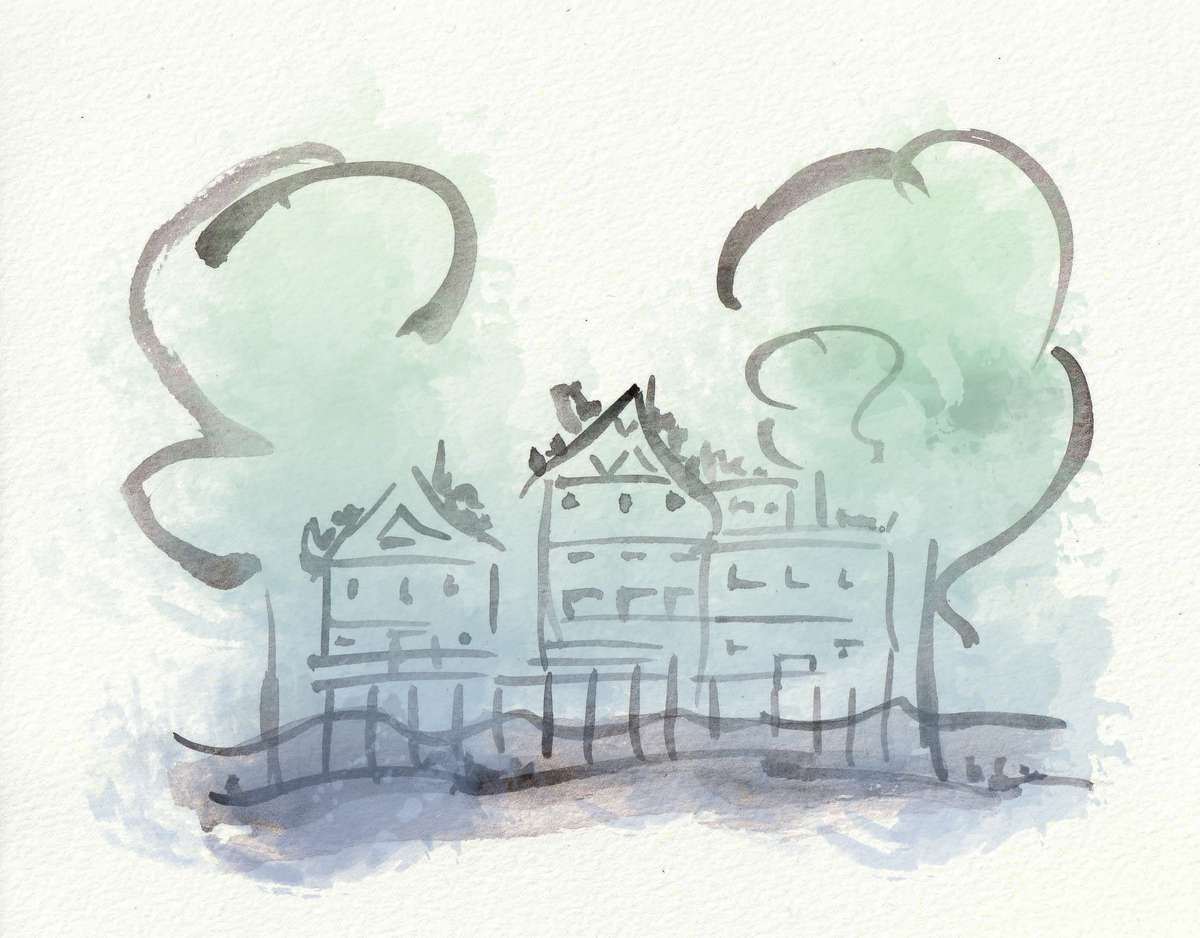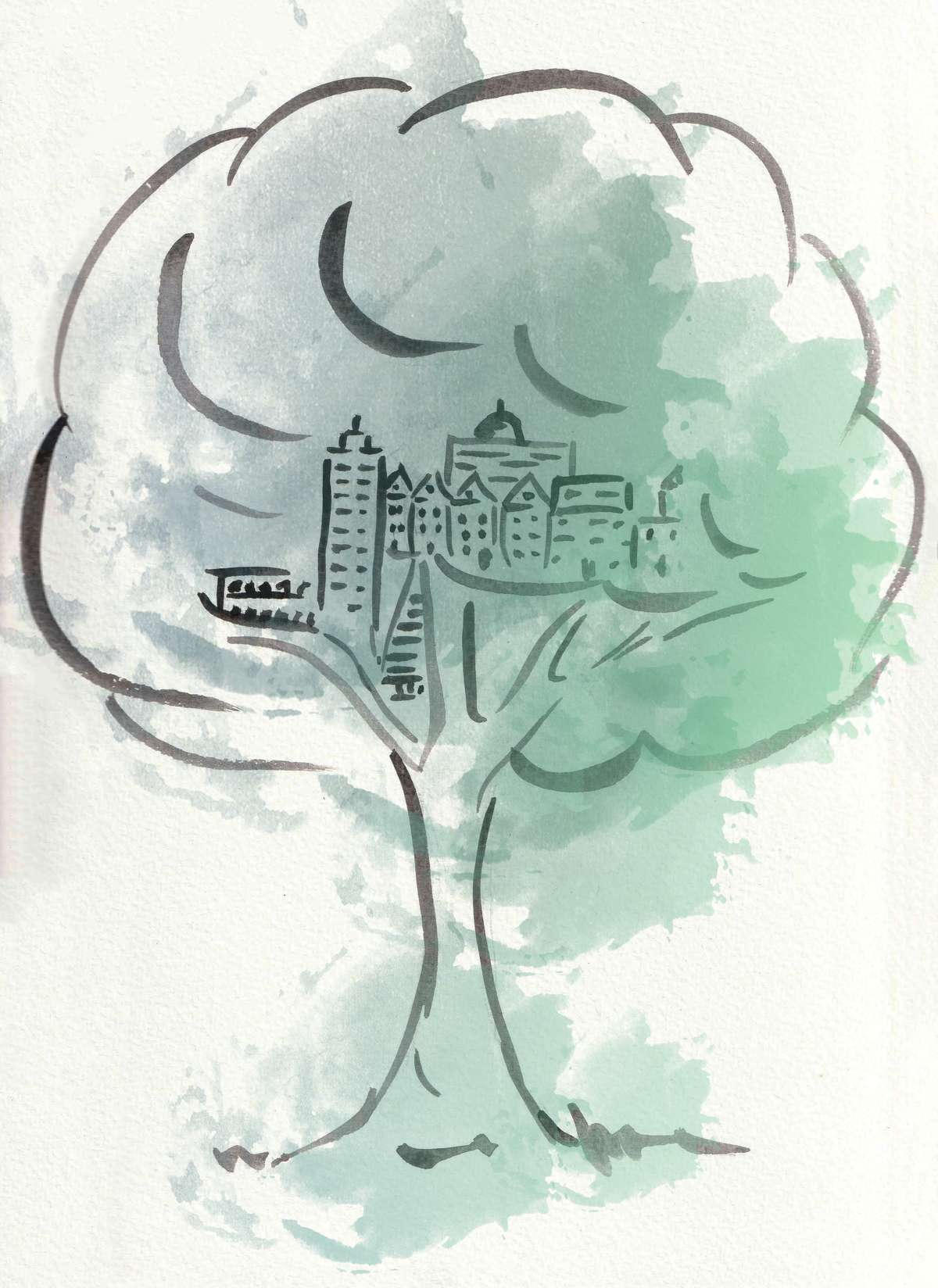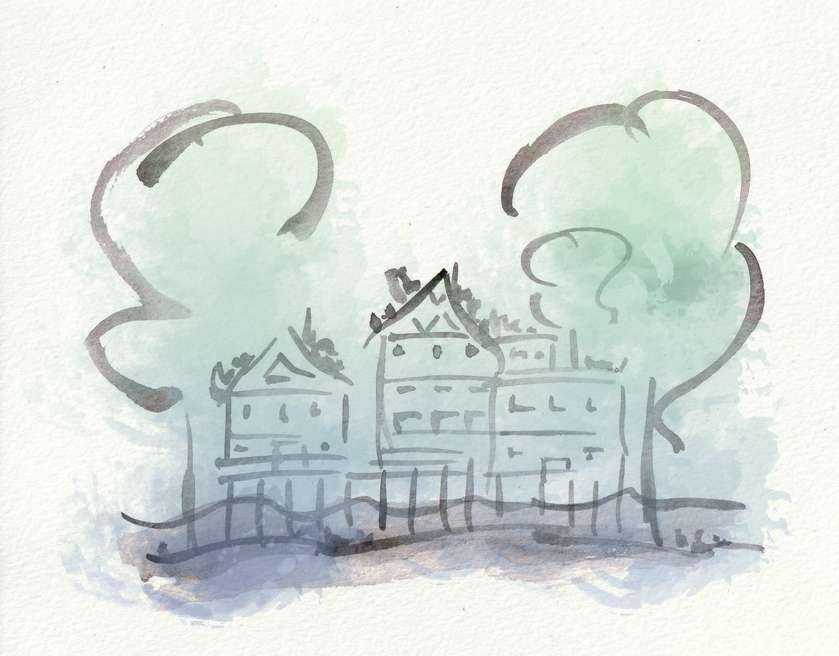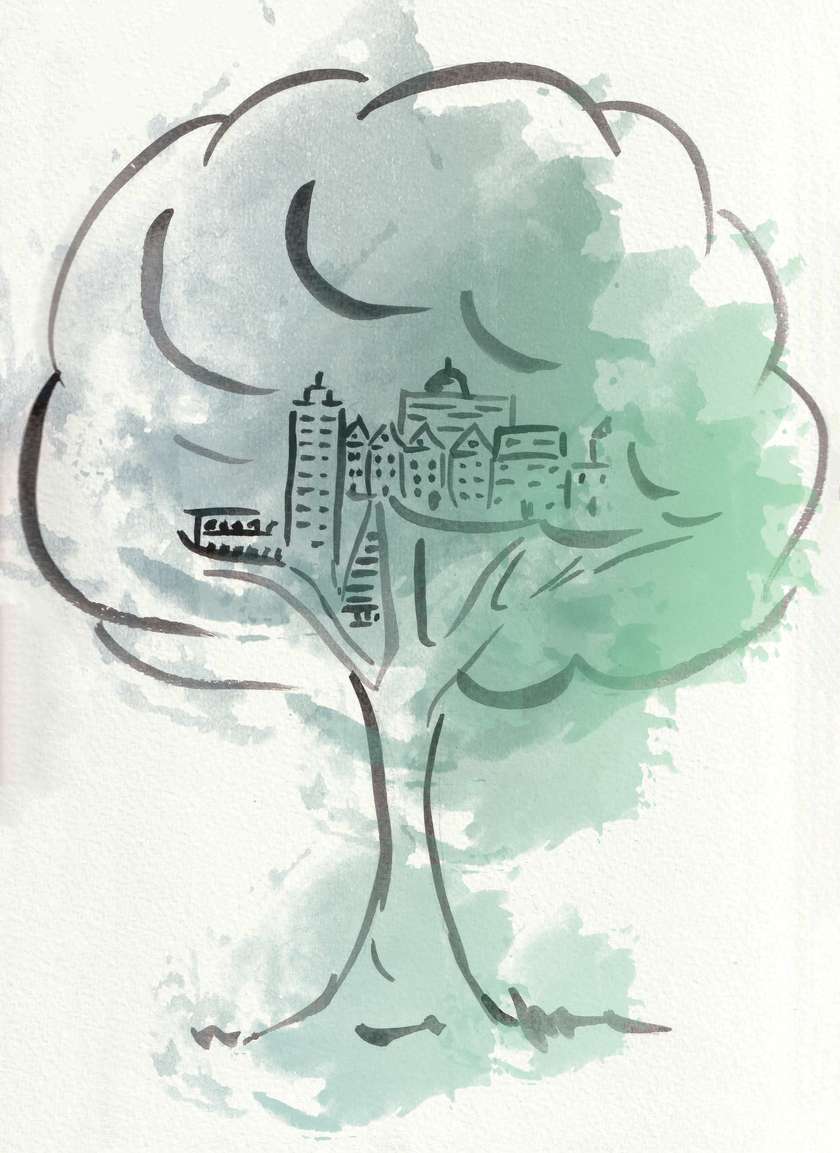Idea by
Maria Baumgartner
Engineering office for landscape planning and landscape architecture
http://www.maria-baumgartner.com/
Call for ideas 2019
OnTiptoes and Trees – Jungle City
OnTiptoes and Trees – Jungle City

- Systemic changes
Footprint
Our ecological footprint is too large. With houses on tiptoe our footprint will fit again.
Heat & Flood
Sealed surfaces heat up and can’t store water. The result is increased floods. Constructions in floodplains have to become drain-neutral. The same applies to coastal areas, where climate change leads to sea-level rise.
To prevent flooding areas to expand, retention-neutral constructions are required in the water catchment areas. By this, the local water storage capacity can remain the same. Surface sealing needs to stop.
Drain- and retention-neutral houses stand on stilts, on tiptoe, so to say. The soil remains permeable. If the house is green-roofed, it even contributes positively to water storage and climate stabilization.
Trees
Trees need a lot of CO2. Leaving trees and planting new ones is the most efficient way of climate conservation. Tree houses are comfortable and habitable all year round. Let's build compact villages and districts with them!

Footprint - Dancing instead of pitching
Our ecological footprint is too large, much too large. It is 4.7 gha per person in Europe, but only 1.8 gha per person is available worldwide (vegan.at/inhalt/fussabdruck). Let’s become more modest, we are only guests on earth. If we stand on tiptoe, it will fit again. Let’s dance, not pitch!

Heat & Flood - Let breathe & flow
Soil sealing increases daily. Some European cities have about 250 m2 of sealed area per inhabitant, the mean soil sealing degree in the urban morphological zones goes up to 80% (eea.europa.eu).
In the future, drain- and retention-neutral houses will stand on stilts, on tiptoe, so to say. The soil remains permeable. If the houses have green roofs in addition, theywill contribute even positively to water storage and climate stabilization.

Tree based architecture
Trees need CO2. A full-grown beech can store 1 tonne (baumpflegeportal.de). CO2 is the most abundant, human-produced greenhouse gas and responsible for 63% of global warming (ec.europa.eu). Trees cool and create shades. Leaving trees and planting new ones is the most effective method of climate conservation.
Tree houses sprout. Year-round habitable tree hotels are topinsider destinations worldwide. How can compact villages of tree houses become reality?
OnTiptoes and Trees – Jungle City
OnTiptoes and Trees – Jungle City

- Systemic changes
Footprint
Our ecological footprint is too large. With houses on tiptoe our footprint will fit again.
Heat & Flood
Sealed surfaces heat up and can’t store water. The result is increased floods. Constructions in floodplains have to become drain-neutral. The same applies to coastal areas, where climate change leads to sea-level rise.
To prevent flooding areas to expand, retention-neutral constructions are required in the water catchment areas. By this, the local water storage capacity can remain the same. Surface sealing needs to stop.
Drain- and retention-neutral houses stand on stilts, on tiptoe, so to say. The soil remains permeable. If the house is green-roofed, it even contributes positively to water storage and climate stabilization.
Trees
Trees need a lot of CO2. Leaving trees and planting new ones is the most efficient way of climate conservation. Tree houses are comfortable and habitable all year round. Let's build compact villages and districts with them!

Footprint - Dancing instead of pitching
Our ecological footprint is too large, much too large. It is 4.7 gha per person in Europe, but only 1.8 gha per person is available worldwide (vegan.at/inhalt/fussabdruck). Let’s become more modest, we are only guests on earth. If we stand on tiptoe, it will fit again. Let’s dance, not pitch!

Heat & Flood - Let breathe & flow
Soil sealing increases daily. Some European cities have about 250 m2 of sealed area per inhabitant, the mean soil sealing degree in the urban morphological zones goes up to 80% (eea.europa.eu).
In the future, drain- and retention-neutral houses will stand on stilts, on tiptoe, so to say. The soil remains permeable. If the houses have green roofs in addition, theywill contribute even positively to water storage and climate stabilization.

Tree based architecture
Trees need CO2. A full-grown beech can store 1 tonne (baumpflegeportal.de). CO2 is the most abundant, human-produced greenhouse gas and responsible for 63% of global warming (ec.europa.eu). Trees cool and create shades. Leaving trees and planting new ones is the most effective method of climate conservation.
Tree houses sprout. Year-round habitable tree hotels are topinsider destinations worldwide. How can compact villages of tree houses become reality?